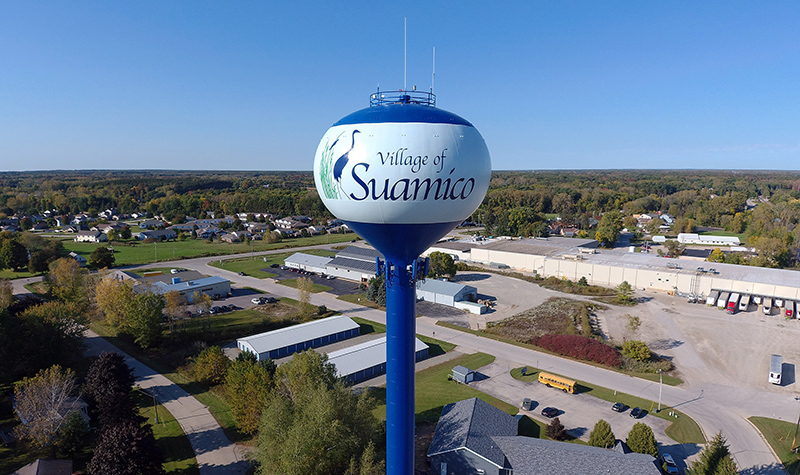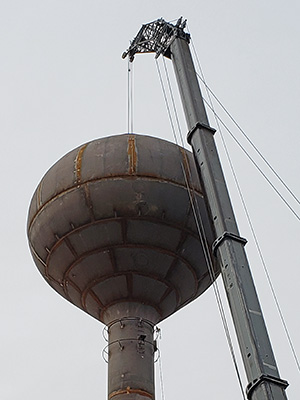BUILT LIKE A TANK: Towers, Pressure Keep Water Flowing

With a mere turn of the faucet, water arrives when and where we need it so routinely that few give this modern-day miracle a second thought.

About the Expert:
Michael Stoffel, PE, is a senior project manager in Ayres’ Municipal Group with extensive experience in well and pumphouse design and modifications, and chemical feed design including instrumentation and control, water main design, and booster pump station design. He has served as project manager for Wisconsin projects including the City of Phillips Well No. 7 and tower projects in Baldwin and Prentice.
But the process of making water readily available in municipalities across the country depends a great deal on the forethought civil engineers lend to it. Water’s journey from its original source to your kitchen sink likely includes a fair number of twists and turns, along with temporary sidetracks for treatment, storage, filtering, heating, and other important reasons to pause. So how do we keep water moving in the right direction? Pressure.
What is the role of a water tower?
When it comes to delivering water to a community, a water tower plays a vital role in providing the storage and pressure needed for a system to function properly. The first role, storage, allows water systems to meet peak demands, typically in the morning and early evening. Think about when you use the most water on any given day and then multiply that across an entire municipality. In those peak demand times, having enough water in storage tanks is crucial to keeping water flowing to homes.
When demand for water goes down during normal working hours and overnight, water systems get a chance to pump more water into the storage tank, and the cycle starts over.
The water tower’s second major role is providing pressure for the water system.
What is water pressure, and how is it generated?
Water pressure is the force applied to water to overcome friction, pushing it through infrastructure and fueling its momentum along the matrix of pipes on its way to your shower. This force can be created by pumps and pressure stations along the route, or in many cases through elevated towers, which take advantage of height, water weight, and gravity to generate adequate pressure. The taller the tower, the more pressure available to move the water.
Engineers designing water towers need to consider not only the height of the tower but also the elevation of the customers served by that tower. Places with a large distance between their high and low points often need to add a second water tower or rely on pumps to provide adequate pressure to those in higher elevations.
For more on how water towers work, see this Practical Engineering video.

What materials are used in water pipes?
Many communities use ductile iron (DI), polyvinyl chloride (PVC), or high-density polyethylene (HDPE) pipes, which have gained popularity in the United States since their introduction in Germany in the 1930s. The flexible plastic pipes demonstrate excellent performance in pressure applications, including municipal water mains, where they provide a durable, corrosion resistant, and cost-effective alternative to traditional iron or steel infrastructure.
What’s the right water pressure for homes?
Residential plumbing is also subject to complications from pressure, which, if too low, can become a quite a nuisance. Residential water pressure that’s too high can damage pipes and fixtures and cause water loss, which results in unnecessary expense and needless demand on the municipal water supply. If you suspect that the water pressure in your home falls outside the normal range of 40 to 80 psi, check with your local water department or call a certified plumber to identify the problem and consider options to resolve it.
Contact any of our municipal service leads for answers to your municipal water questions.

Post a comment: